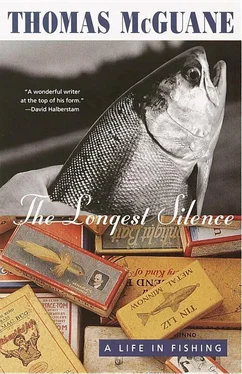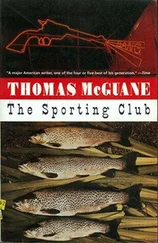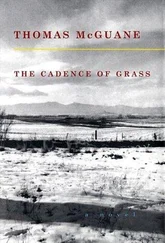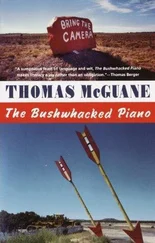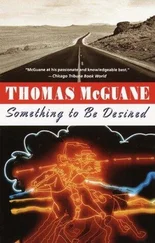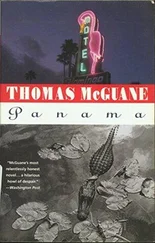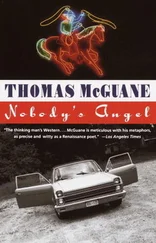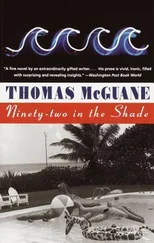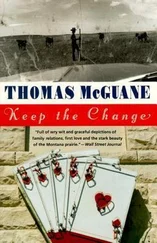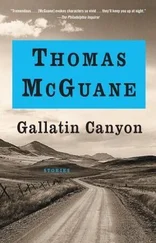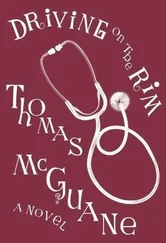IN SPRING, warm wind comes to Montana before anything turns green, though not quite before some birds — owls and juncos for example — nest and even begin to hatch their young. The tiny ground-hugging phlox displays its chaste white flowers; the harrier begins to lose his winter white and the red-tailed hawks haul all manner of junk, including the hot-orange twine we use to bind haybales, to build their messy nests in the black cottonwoods along the creek. The creek itself is some days pellucid, throwing the shadows of trout on its graveled bottom, and on others milky with low country runoff. On the cliffs, rock marmots aggressively pull up the bunch grass and take it under ledges and down holes to build nests. All the birds are particularly loud and indelicate just now; but the red-shafted flickers screeching from the tops of the tallest, barest cottonwoods seem the most brazen, Brewer’s blackbirds the busiest in this bright sun that encourages their iridescence. In the summer pasture north of our house the teal pause in the water-filled buffalo wallows of ancient times; the magpies tumble and mob in the clumped junipers. The meadowlark stands on the stones of the Indian grave east of the Charlie Wild draw and sings her heart out.
When I hike, I frequently come up on groups of mule deer feeding, as though I were a great stalker, but the deer are so close to their physical limits at this edge between winter and spring that they are not very alert. When the shadow of a marsh hawk flickers through them, they don’t jump as they would later on, and the ears of some hang down as they do on sick calves. When they flee, the inverted rowing motion of their synchronized legs doesn’t send such a shudder of power through their trunks as it will in another month.
The sagebrush buttercup is the brightest thing in the landscape, a buttercup so early that it follows the retreating snow in a yellow haze. This is the first flower the grizzly sees when he wakes up from his nap. Cousin to the cursed crowfoot, a poisonous, blistering, inflaming flower, sagebrush buttercup is an important spring food to the blue grouse. I stood in a field of this beautiful flower, feeling the strap of my binoculars cut into my neck and sensing in the vault of tremendous sky an uncertain skirmish between the winds of winter and those of spring. To the north, the Crazy Mountains looked starved for restoration, and it was good to remember that their slaggish forms would soon burst into something I always think I can imagine but never quite do.
In the cottonwoods below the house stands a crooked giant whose top is splayed into a garish, surrendering shape. At the crotch of these upper branches, a great horned owl has raised a single baby. And when the sun comes out, she encourages him to advance along the dead branch on the north side of his nest. Nearly her height, his downy looseness gives him away. He doesn’t seem to know what is expected of him. He stares at me amazed, while the wind takes bits of his down and sails them off toward the banks of wild roses. His mother, glaring from above with her yellow eyes, looks like the wife of Satan. As many times as I have seen her, I’ve never seen her first. She is always watching from her tree as though she weighed a plan for me.
Over the sere landscape, creatures are chasing one another just like the children at the local junior high. The kingfishers scream and the meadowlark sings as cascadingly and melodiously on the wind as she does standing on a strand of barbed wire. Some of our calves are buoyant; in others the rains have brought on scours, their backs humped, their ears down, and their legs scalded with diarrhea. The cows have begun to “ride” one another, and our five bulls holler from their segregated pasture south of the county road. The long, cold rains have given two calves pneumonia. One runs a high fever and stares at the ground, the other has compacted her lungs and will never do well. The vet said, “She’d be just as well off if she died.” In the corral where the sick calves stand, mating barn swallows chase each other, fall to the ground, and breed.
I saddle a horse to tour the pastures in search of spring grass. Everything is late this year. We’re two weeks behind town, only fifteen miles away. There’s a yearling buck dead by the first spring, nearly devoured by coyotes who have seized intestines and backed several yards from the carcass. This is merely a boon to the coyotes, who have come by this meal as honestly as did the Pennsylvania wolves who devoured the bodies of Braddock’s soldiers after the battle of Monongahela. The face of creation takes in everything with a level stare. When I was younger these manifestations of life’s fury were comfortably free of premonition. Now they bear a gravity that dignifies the one-day lives of insects, the terrible slaughterhouse journey of livestock, and, of course, ourselves and our double handful of borrowed minerals. The old man I see staring from his porch rocker when I go to town is staring into a tremendous distance. As surely as homeowners pride themselves on property that fronts the beach, the lake, or the golf course, we all enjoy abyss frontage; and some, like the fellow in his rocker, seem absorbed by the view.
The obsessive busy-ness Thoreau complained of is rooted in fear; fear: of mortality, and then of the pain of loss and separation. Only in the observation of nature can we recover that view of eternity that consoled our forebears. The remains of the young buck dead at the spring are sounded in the cliffs above our house in the calls of young coyotes, testing the future with their brand-new voices, under the stars of outer space.
The rivers stayed high for longer than I could remember seeing. And finding fishable water wasn’t easy. I went to West Yellowstone, which sits high in several watersheds. Every year, the fly shops there boast some new fly that is certain to cancel blank days for all time. This year it was a tiny doodad that resembled a little bristling worm. When I bought a few of them, another angler, a hay farmer in a colorful “Spawn ’Til You Die” T-shirt just looked at them in my palm and swung his head from side to side as he remembered the shoals of trout suicides this inoffensive little thing had produced. Either that or he was wondering how anyone could fall for this one at all.
I drove into Yellowstone Park, headed for the Firehole River. The tourists paused at everything, stopping in the middle of the highway with a heedlessness so uncharacteristic of Americans that it was pleasantly maddening. I parked on a high bank overlooking the river and rigged up, then picked my way through grazing buffalo to reach the bank of this beautiful stream. Steam from hot springs and geysers and fumaroles drifted weirdly over the classic waters of the Firehole and several buffalo fed all the way down to the marshy edge of the river, where a few bank feeders sucked down emerging mayflies. I ought to have had good success with pale morning duns but the gusting wind out of the canyon had suppressed the hatch.
There were plenty of fishermen, some disconsolate and making halfhearted casts, some pressing on with a higher view, some extraordinarily costumed in the new predatorial style, camouflaged and fishing like New Zealanders with dark-dyed lines. All these solicitations were being declined by the trout. The few mayflies to appear were tumbled along the surface by the wind, unprofitable for fish to run down.
So I drove on to the upper Madison, which was not exactly quiet either. Deciding to enjoy the uproar, I stopped at a general store and bought some bubble gum, read the cartoon, and rigged my tackle. A young boy came up and showed me his round, plastic fly box and asked why he hadn’t caught a fish all day. I gave him three of the mysterious, bristling worms. Without saying much, I communicated the idea that I had long relied on this remarkable fly. I could see hope renew itself in his face as he considered the logic of this irrational new shape wound on a small hook. But I was already violating my foremost rule for catching more fish: keep the fly in the water.
Читать дальше
